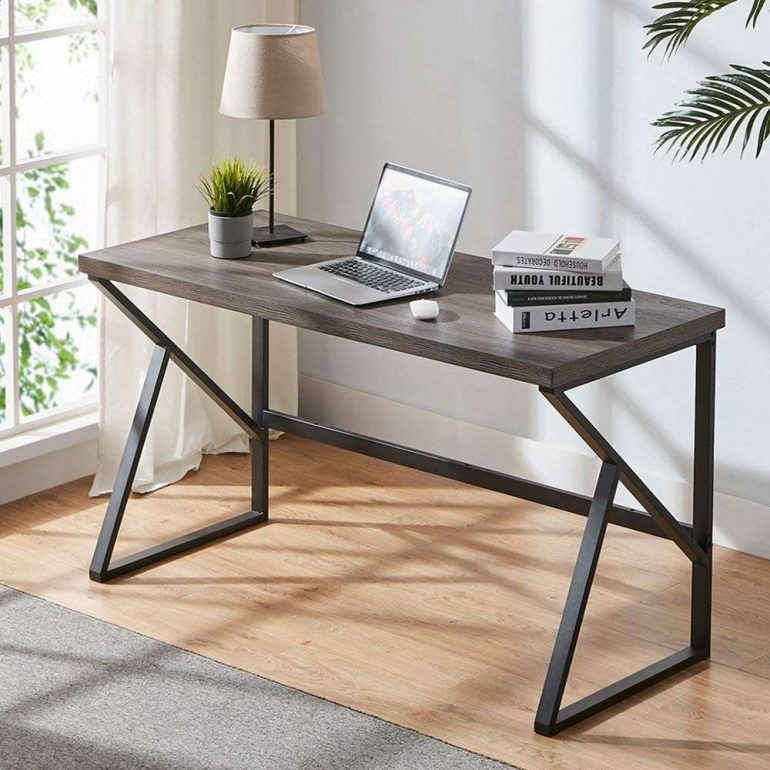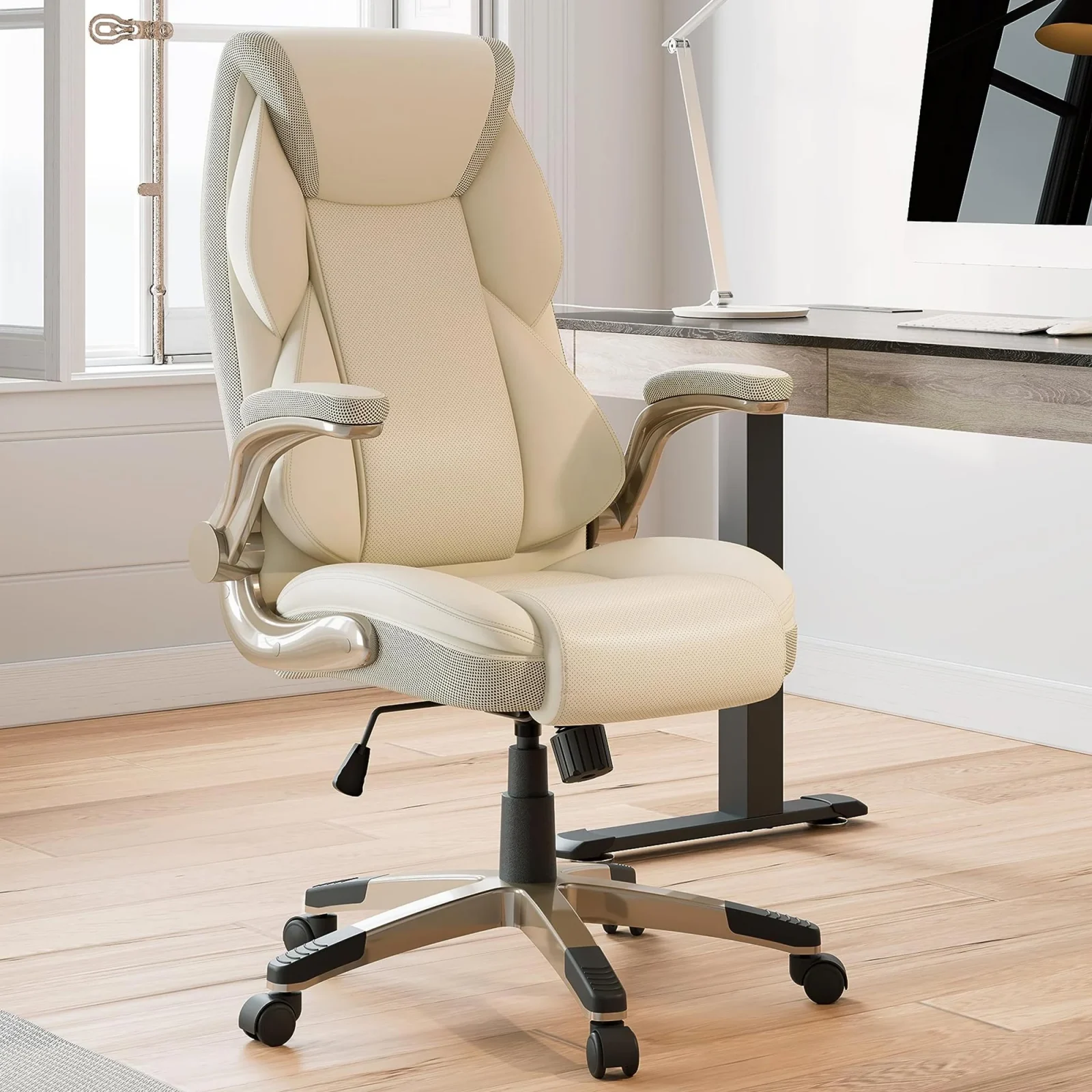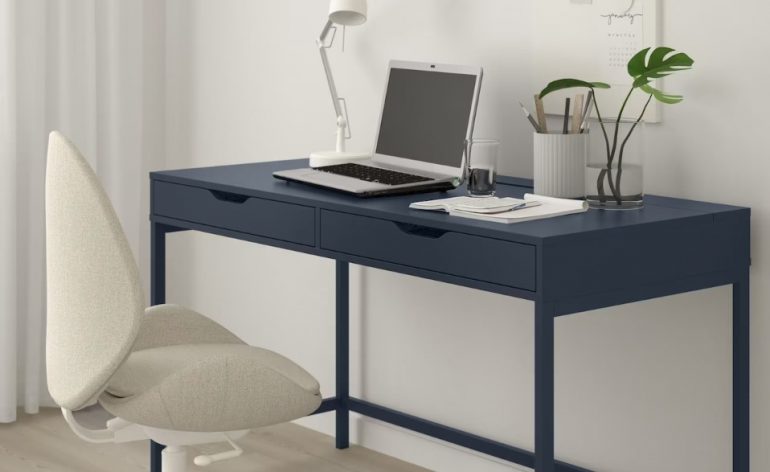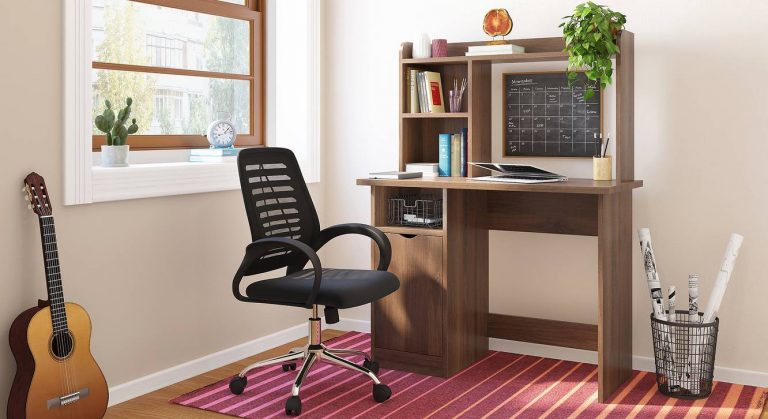Selecting the right study table and office chair is crucial for creating an efficient and comfortable workspace for work, studying, or everyday tasks. These essential pieces of furniture affect your posture, productivity, and the overall feel of your room.
Here’s a guide on choosing the right study table and office chair to fit your needs.
1. Choosing the Right Study Table

Size and Space
Before availing of a study table, measure and ascertain how much space it would take. The table should fit snugly in the room it is designed for without overcrowding.
Depending on what you would be putting on it or what you need, you are functioning with a study table, either a small one for simple things or a sizeable table that should offer plenty of workspace space.
A simple desk may work if you only have a laptop or a notebook to place on the desk. Conversely, you should have a wider table surface if you have books, monitors, or other items.
Storage Options
A well-organized workspace helps when you select a table with good storage options. The study table must have drawers, shelves, or built-in compartments to store your must-haves, such as pens, notebooks, and cables. If you’re more into a neat, minimalist look, go for a study table big enough but with hidden storage for a tidier desk.
Material and Durability
The material used in constructing the study table speaks of its durability and styling. A wooden table is stout and evergreen, while metal or glass tables add a modern touch. Consider the finishing of the materials, the room in which it will be placed, and how frequently it will be used. While going for a sturdy surface, pick those that are easy to maintain and will offer their services for an extended period.
Height and Comfort
Once you find a workable dimensions ratio, relate them to office height. The height of the table long before you realize it could be the next hot debate: no back or shoulder strain for a long time at a table based on its designer’s eye. You can sit at a good table with your feet flat on the ground and your elbows at a 90-degree angle. If more than one person is in the equation to use this workspace modality, think about an adjustable table.
2. Choosing the Ideal Office Chair

Ergonomics and Support
Select an ergonomic design for your chair. This will generally help maintain the important natural curvature of your whole spine or lower back, preventing postural slumping and backache. Further adjustments of the front-to-back angle, height, and back alphanumerical are viable through adjusting the same chair.
So, a chair must have the provision for backrest & lumbar support generally felt in the lower back. In an ideal cushion office chair, your feet will rest flat on the ground, and your knees will assume a 90-degree angle.
Comfort and Cushioning
Take into account a chair that best supports you for the long haul. Many administrators think that an intervention channel with foam padding and cushioned seats provides the most incredible comfort for long periods of sitting. Look for a nearby fitted chair. Cushions should, therefore, be well-padded yet firm enough not to interfere with posture. Light mesh is good and avoids having an overheating point; therefore, it is a perfect fit style.
Mobility and Adjustability
Office chairs on wheels allow easy mobility within the office work area without too much watch. An office chair must-have features that are adjustable with seat height. The right one is usually the height that matches your study table and gives you the ease of doing things.
3. Combining the Study Table and Office Chair

Proportions and Compatibility
Ensure that the height of the study table and office chair are compatible. If the chair is too low or the table too high, it can lead to discomfort. An adjustable chair can solve this issue, providing flexibility in height. It’s also important that the chair fits under the table with sufficient legroom for comfort.
Style Coordination
For a cohesive look, select a study table and office chair that match or complement each other in style and materials. For instance, pairing a sleek wooden table with a modern metal chair can create a balanced contrast.
4. Tips for Comfort and Productivity
Adopt healthy habits while using your workspace to maintain comfort and productivity. Take regular breaks to stand, stretch, and move around. Organize your study table to minimize distractions, keeping only the essentials on hand. A clean and clutter-free desk helps you focus better.
You can also invest in desk organizers to manage cables, papers, and other items to keep everything in its place. Adjust your office chair throughout the day to shift positions and avoid stiffness. Consider adding a small footrest or cushion to improve your comfort during long work sessions for even more flexibility.
Conclusion
Choosing a suitable study table and office chair is essential to maintaining the workspace’s comfort and efficiency. When choosing your table and chair, consider ergonomics, size, storage, and style. Proper setup will assure maximum output and comfort during prolonged work or study sessions.
These factors give you a way to ensure that your workspace is design-minded, functional, and aesthetic. Investing in a study table and an office chair will develop a comfortable, productive, healthy workspace.

